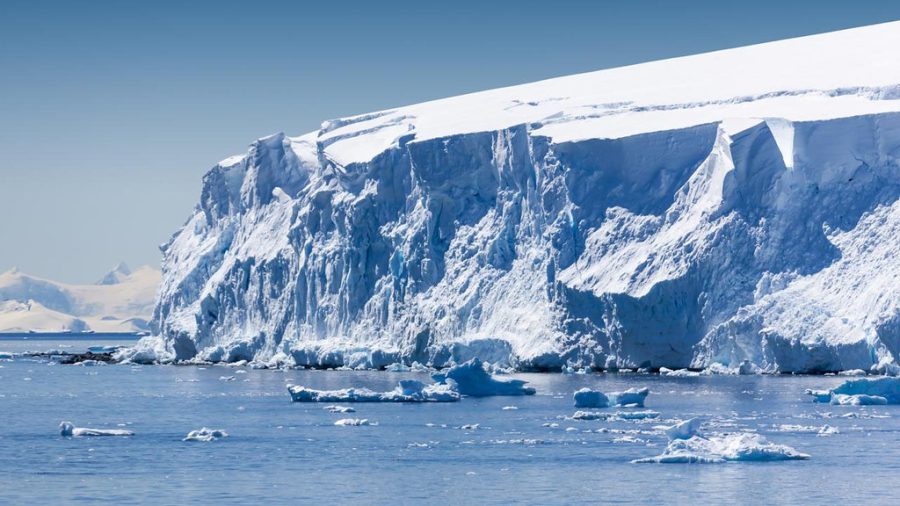West Antarctica’s “doomsday glacier” melts at alarming rates
September 16, 2022
The massive Thwaites Glacier in western Antarctica is melting at an overly accelerated pace, threatening the region and global seas sooner than previously predicted, according to scientists.
Scientists have historically tracked the glacier’s mass over the years, where unprecedented glacial retreat from rising temperatures established the region as the latest pivotal theater of climate change.
The “doomsday glacier,” named for the drastic consequences of its melting, has a net area greater than the state of Florida and is fit enough in both size and position to initiate a variety of radical changes within the landscape — changes that are already visible on a global scale.
Thwaites Glacier was the subject of a study published on Sept. 5 in Nature Geoscience.
In the study, researchers stated that recent calving events, where large chunks of ice retreat from the glacial shelf, have seen an unprecedented amount of deterioration in the glacier’s structure over the past few years.
The rate of ice retreating from Thwaites’ Glacier, compared to the past decade, has now nearly doubled. It was recently thought that the glacier was unlikely to collapse in this century, a prediction now made uncertain.
The study formulated a detailed record of the glacier’s shrinkage over centuries in various sites and critical points, pinning the beginning of Thwaites’ melting inner cavity due to deep warm water underneath “as recently as the mid-20th century,” according to lead author Alastair Graham.
Thwaites’ water displacement contributes to about 4 or 5% of worldwide sea level rise per year already, Brent Goehring, the lead principle researcher on the project for the International Thwaites Glacier Collaboration, stated to ABC News.
“Thwaites Glacier is often referred to as the weak underbelly of the West Antarctic ice sheet,” Goehring added.
Scientists estimated that the glacier’s contribution to global sea levels could be as much as 10 feet on its own.
However, the melting of the Thwaites Glacier isn’t the only thing scientists are concerned about.
Its tremendous size means that when fully shifted from its shelf and broken apart, Thwaites would cause a disruption in the group stability of other large glaciers in the region, creating a cascade of glaciers to fall apart.
“If those glaciers would destabilize, a lot of neighboring areas would also fall apart, causing a widespread collapse,” Indrani Das, who is associate research professor at Columbia’s Lamont-Doherty Earth Observatory and co-principle investigator for the ITGC, said. “It would cause a huge sea level rise.”
According to NASA, the overall sea level rise from the deterioration of the western Antarctic ice sheet could be up to 16 feet.
Scientists also observed over 160 ridges on Thwaites’ surface spanning miles across, a formation caused by individual edges of ice separating from the main body and floating up and down with the changing tides.
Repercussions from unbalanced glacial melt causes massive variation in geological and atmospheric conditions across the planet, changes resulting in disruptions across ecosystems.
Water usually frozen above sea level displaced into oceans can not only cause rising seas, but can also change oceans’ thermohaline circulation patterns and shift currents’ trajectories due to the fresh water stored in glaciers. Changes in water salinity greatly affect marine life.
A multitude of animal life inhabit glaciers and frozen environments. These organisms would be displaced if glaciers continue to melt, further adding to repeatedly increasing migrations and extinctions.
Additionally, the hundreds of miles of white ice caps deflect a sizable portion of solar radiation from being absorbed into the Earth’s crust, shielding the Earth from excessive heating.
“Thwaites is really holding on today by its fingernails, and we should expect to see big changes over small timescales in the future – even from one year to the next – once the glacier retreats beyond a shallow ridge in its bed,” Robert Larter, a marine geophysicist and one of the study’s co-authors from the British Antarctic Survey, said in a press release








